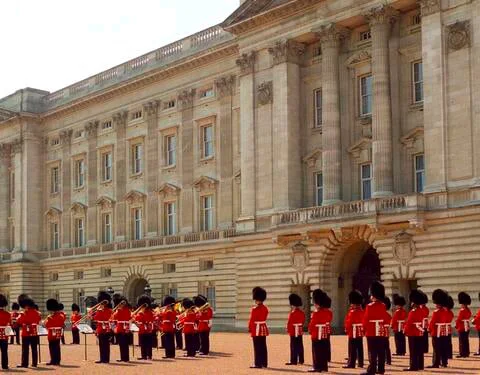Buckingham Palace, an iconic symbol of British royalty, has a rich and fascinating history that spans centuries. From its humble beginnings as a townhouse to its current status as the official residence of the British monarch, the palace's evolution reflects the changing dynamics of the British monarchy and the nation itself. In this article, we delve into the captivating history of Buckingham Palace, tracing its remarkable journey through time.
Early Origins and Construction
The story of Buckingham Palace begins in the early 18th century when the Duke of Buckingham built the original Buckingham House on the site. The house served as a private residence, standing in the midst of what was then a tranquil and rural area on the outskirts of London. It was King George III who purchased the house in 1761 for his wife, Queen Charlotte, making it an official royal residence.
George IV's Transformation
It was during the reign of King George IV that the transformation of Buckingham House into a grand palace began. Architect John Nash was tasked with expanding and remodeling the building, converting it into a neoclassical masterpiece. Nash's designs added wings to the building and incorporated the now-famous central balcony that serves as a platform for important royal events and appearances.
Victoria and Albert
Buckingham Palace truly came into the spotlight during the reign of Queen Victoria. In 1837, she became the first monarch to take up residence at the palace, marking the beginning of its status as the official royal residence in London. The palace gained further prominence when Queen Victoria married Prince Albert in 1840. The couple, with the guidance of architect Edward Blore, undertook numerous renovations and enhancements to the palace's interiors, creating a more opulent and refined living space.
The Palace's Modernization
The late 19th and early 20th centuries saw further modernization of Buckingham Palace. The addition of the iconic balcony was a significant development, becoming synonymous with royal occasions and appearances. The palace also became a focal point for the British public, especially during the reign of Queen Elizabeth II, who has used the balcony to greet crowds on numerous historical occasions.
Surviving World War II and Beyond
Buckingham Palace faced its share of challenges during World War II. The palace was bombed during the Blitz, but fortunately, the damage was not irreparable. In a poignant act of solidarity, Queen Elizabeth (later known as the Queen Mother) famously declared that she would not leave London, a decision that resonated with the British people. This resilience and dedication to the nation endeared the royal family to the public even more.
Buckingham Palace Today
Today, Buckingham Palace remains an active and dynamic part of British royal life. While it continues to serve as the primary residence of King Charles III in London, the palace is also a hub of diplomatic and official activities. State banquets, receptions, and ceremonies are held within its grand halls, embodying the legacy of centuries of British monarchy.
The history of Buckingham Palace is a testament to the enduring role of the British monarchy in shaping the nation's identity and culture. Its journey from a simple townhouse to a grand and imposing palace mirrors the evolution of British society itself. As a symbol of tradition and continuity, Buckingham Palace stands as a living monument to the monarchy's past, present, and future.





